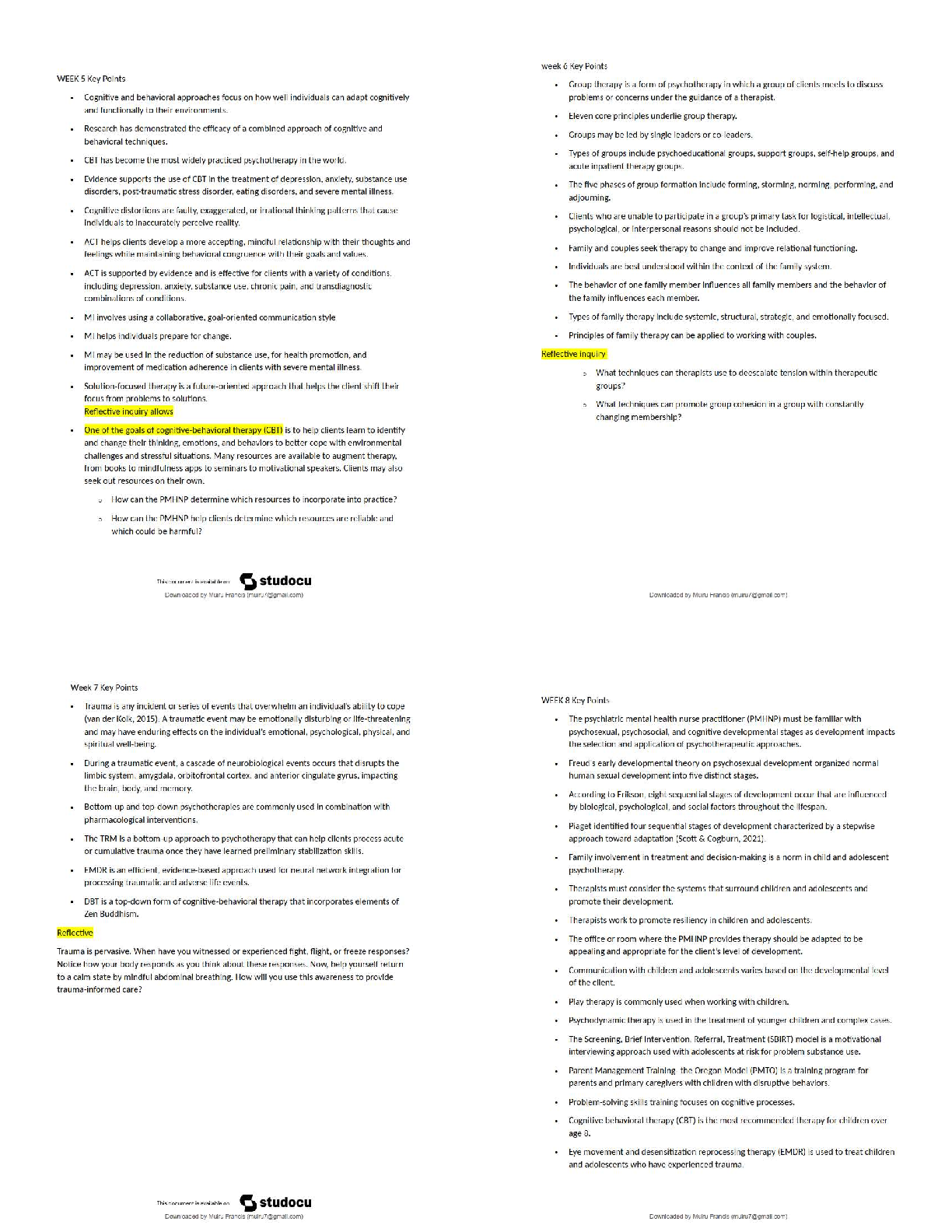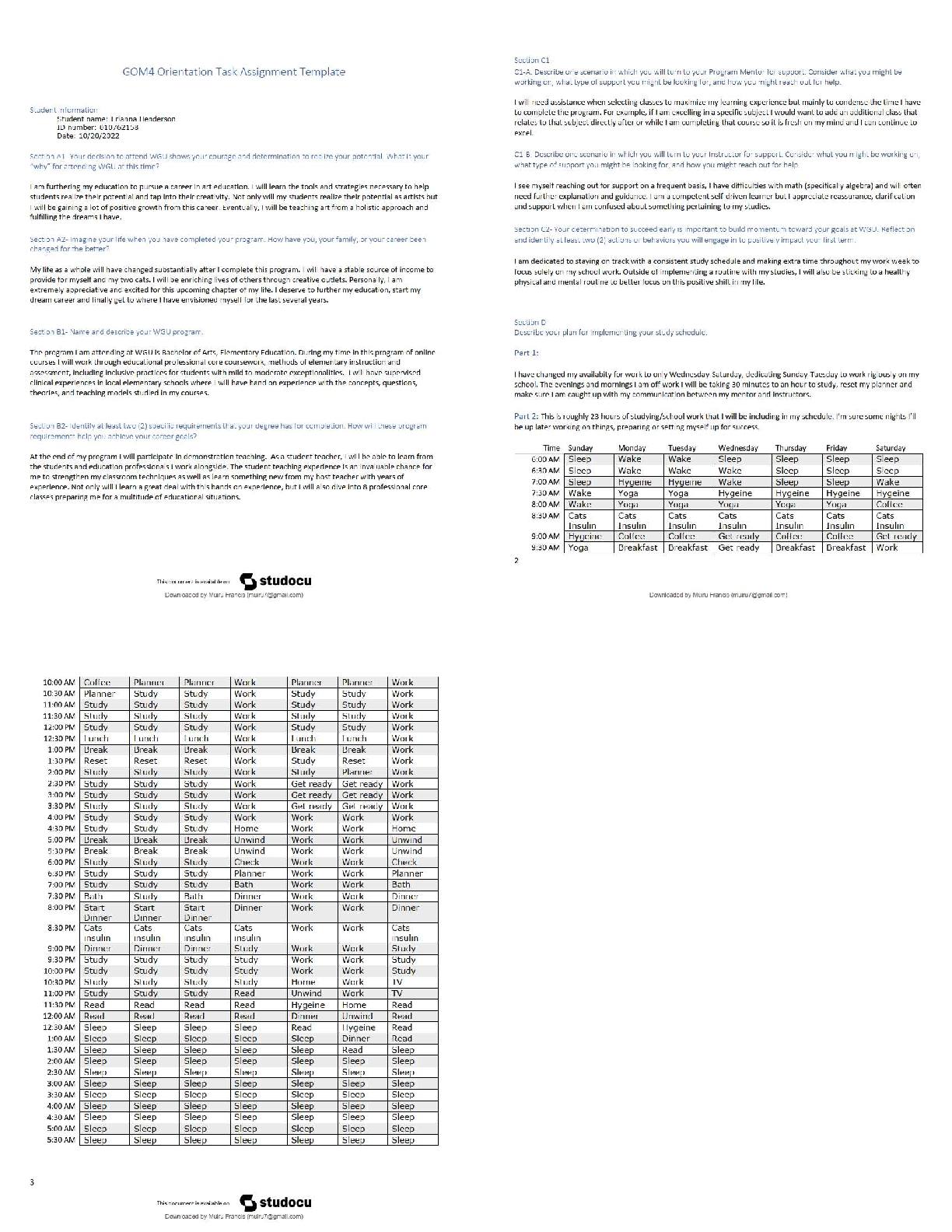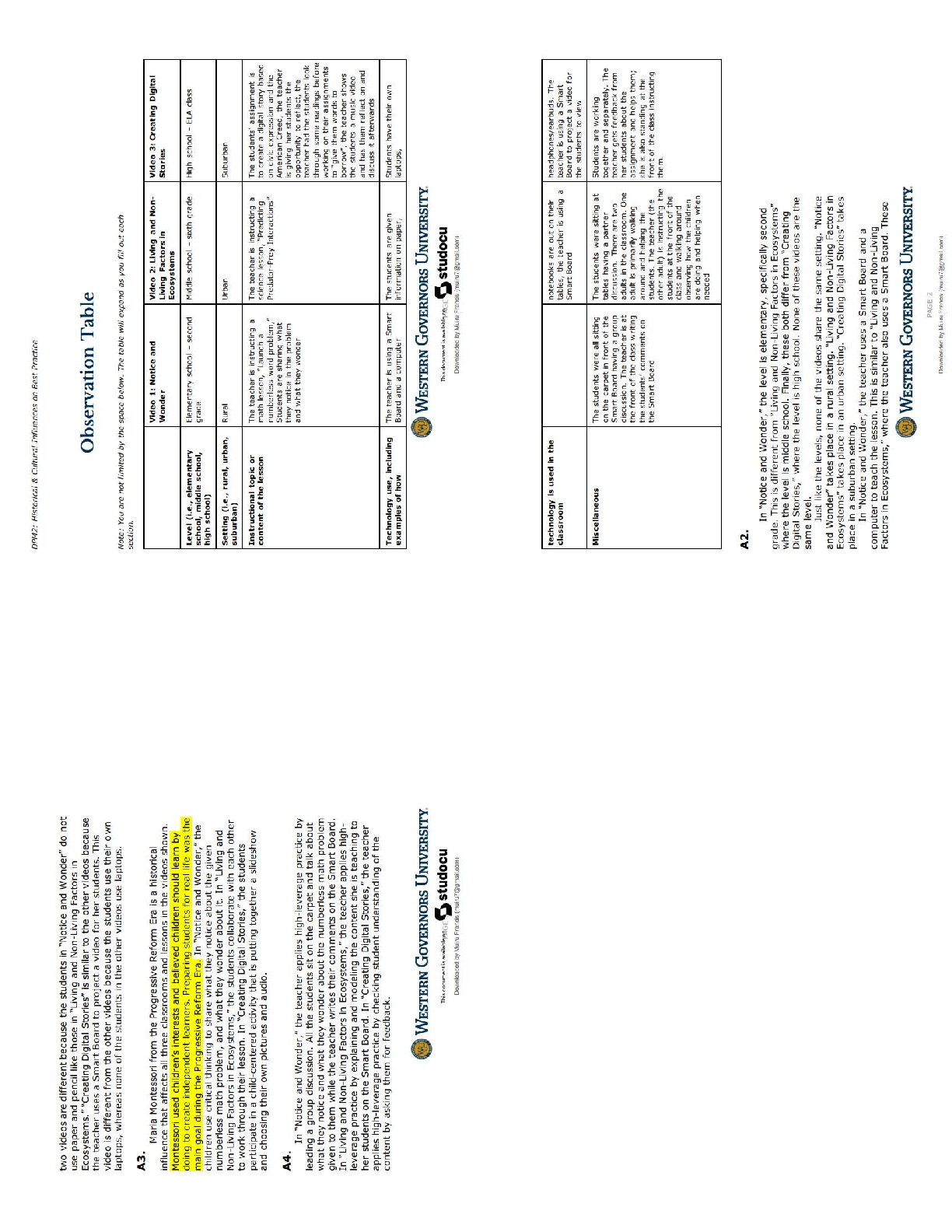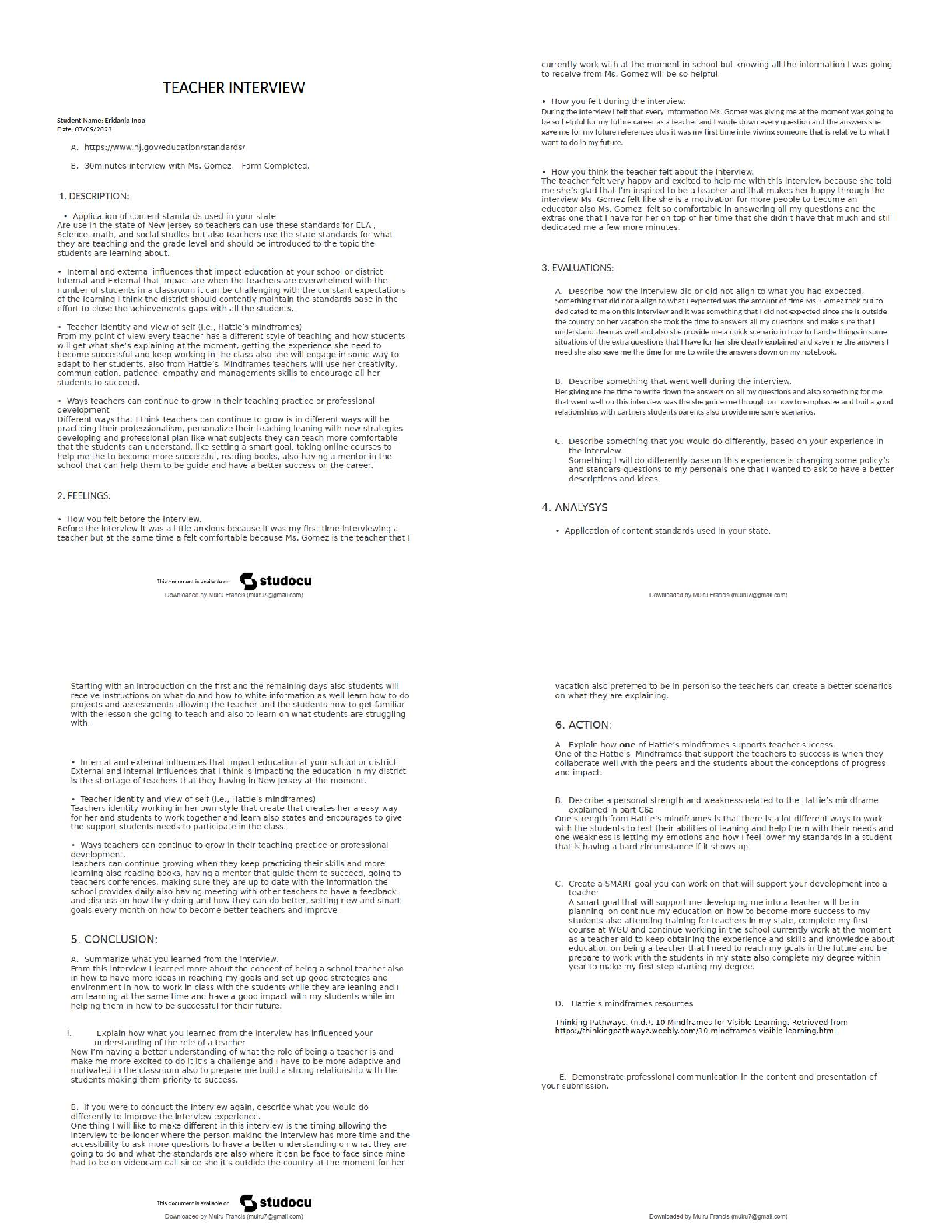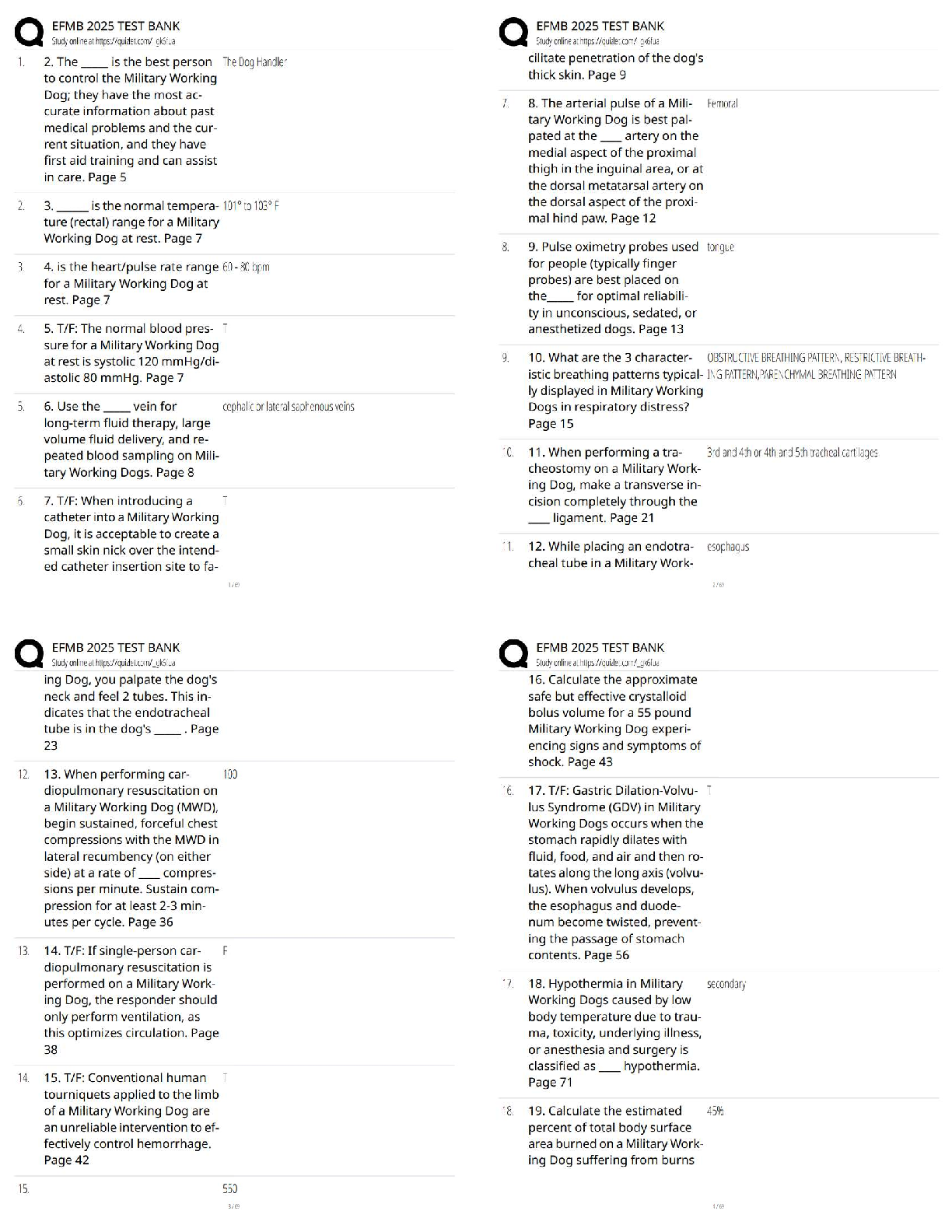Biology > QUESTIONS & ANSWERS > American Military University BIOL 180 Quiz 3 Questions and Answers Already Passed (All)
American Military University BIOL 180 Quiz 3 Questions and Answers Already Passed
Document Content and Description Below
Part 1 of 6 - Chapter 3 24.0 Points Question 1 of 33 3.0 Points Which structure carries out oxidation reactions that break down fatty acids and amino acids? A. peroxisomes B. chloroplas ... ts C. mitochondria D. ribosomes Feedback: Great job. Question 2 of 33 3.0 Points Which structure is responsible making ATP, the cell’s main energy-carrying molecule? A. mitochondria B. ribosomes C. peroxisomes D. chloroplasts Feedback: Great job. Question 3 of 33 3.0 Points Light and dissecting microscopes are binocular. What does this mean? A. They have two separate lens systems, one for each eye B. They have two eye pieces, and one lens system C. They have one eye piece, and one lens system D. They have one lens system, that is split for each eye Feedback: Great job. Question 4 of 33 3.0 Points What is it called when a substance moves from an area of high concentration to an area of low concentration until the concentration is equal across the space? A. active transport B. osmosis C. diffusion D. facilitated diffusion Feedback: Great job. Question 5 of 33 3.0 Points What are the network of protein fibers that help maintain the shape of the cell referred to as? A. plasma membrane B. cytoplasm C. lysosome D. vacuole E. cytoskeleton Feedback: Great job. Question 6 of 33 3.0 Points If a substance must move up a concentration gradient, there is an input requirement of what from the cell? A. Sugar B. NaCl C. ATP D. H2O Feedback: Active transport requires an input of energy in order to occur. Review active transport in Chapter 3. Question 7 of 33 3.0 Points Which structure is responsible for protein synthesis, and is present in both eukaryotes and prokaryotes? A. chloroplasts B. mitochondria C. peroxisomes D. ribosomes Feedback: Great job. Question 8 of 33 3.0 Points Which is the only substance involved in osmosis? A. alcohol B. salt C. water D. sugar Feedback: Great job. Part 2 of 6 - Chapter 4 24.0 Points Question 9 of 33 3.0 Points Why can’t cells store extra free energy? A. it would result in an increase of heat, which would denature enzymes B. it would result in a lowering of heat, which would freeze the cells C. it would result in a lack of space, which would keep out other molecules D. they can store free energy, which is why we are able to survive Feedback: Great job. Question 10 of 33 3.0 Points What kind of energy does a slow moving wrecking ball contain? A. light energy B. heat energy C. kinetic energy D. potential energy E. chemical energy Feedback: Great job. Question 11 of 33 3.0 Points What is the term for when an activator binds to an enzyme, which alters the active site so that the substrate is able to bind? A. competitive inhibition B. allosteric activation C. allosteric inhibition D. active site Feedback: Activation occurs when an enzyme is turned on, and can occur using an alternate site. Review energy and metabolism in Chapter 4. Question 12 of 33 3.0 Points Reactions that release free energy are called what? A. endergonic B. potential C. exergonic D. kinetic Feedback: Great job. Question 13 of 33 3.0 Points Rubisco is involved in photosynthesis, and helps to speed up the reaction from carbon dioxide to water. What is the generic term for rubisco? A. exergonic B. endergonic C. substrate D. enzyme Feedback: Certain proteins help to lower the activation energy of chemical reactions inside of a cell. Review energy and metabolism in Chapter 4. Question 14 of 33 3.0 Points What kind of metabolic pathway takes small molecules and builds them into larger ones, requiring energy? A. metabolism B. catabolic [Show More]
Last updated: 3 years ago
Preview 1 out of 24 pages

Buy this document to get the full access instantly
Instant Download Access after purchase
Buy NowInstant download
We Accept:

Also available in bundle (1)
Click Below to Access Bundle(s)

American Military University BIOL 180 Quiz 1 - 8 Questions and Answers Already Passed
Part 1 of 7 - Chapter 20 27.0 Points Question 1 of 31 3.0 Points A wolf is an example of what member of the food chain? A. apex consumer B. secondary consumer C. producer D. tertiar...
By Nutmegs 3 years ago
$40
8
Reviews( 0 )
$13.00
Can't find what you want? Try our AI powered Search
Document information
Connected school, study & course
About the document
Uploaded On
Mar 31, 2022
Number of pages
24
Written in
All
Additional information
This document has been written for:
Uploaded
Mar 31, 2022
Downloads
0
Views
220





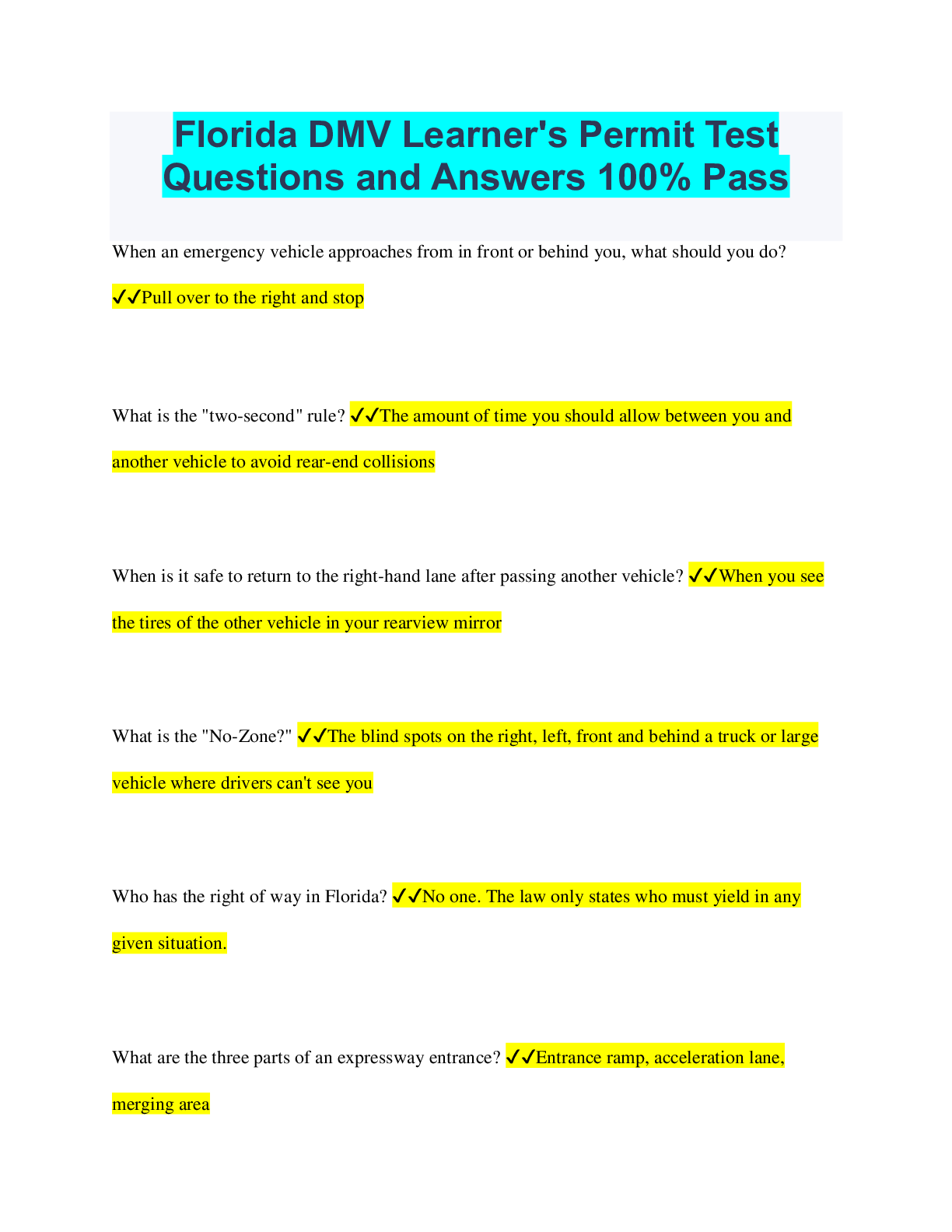
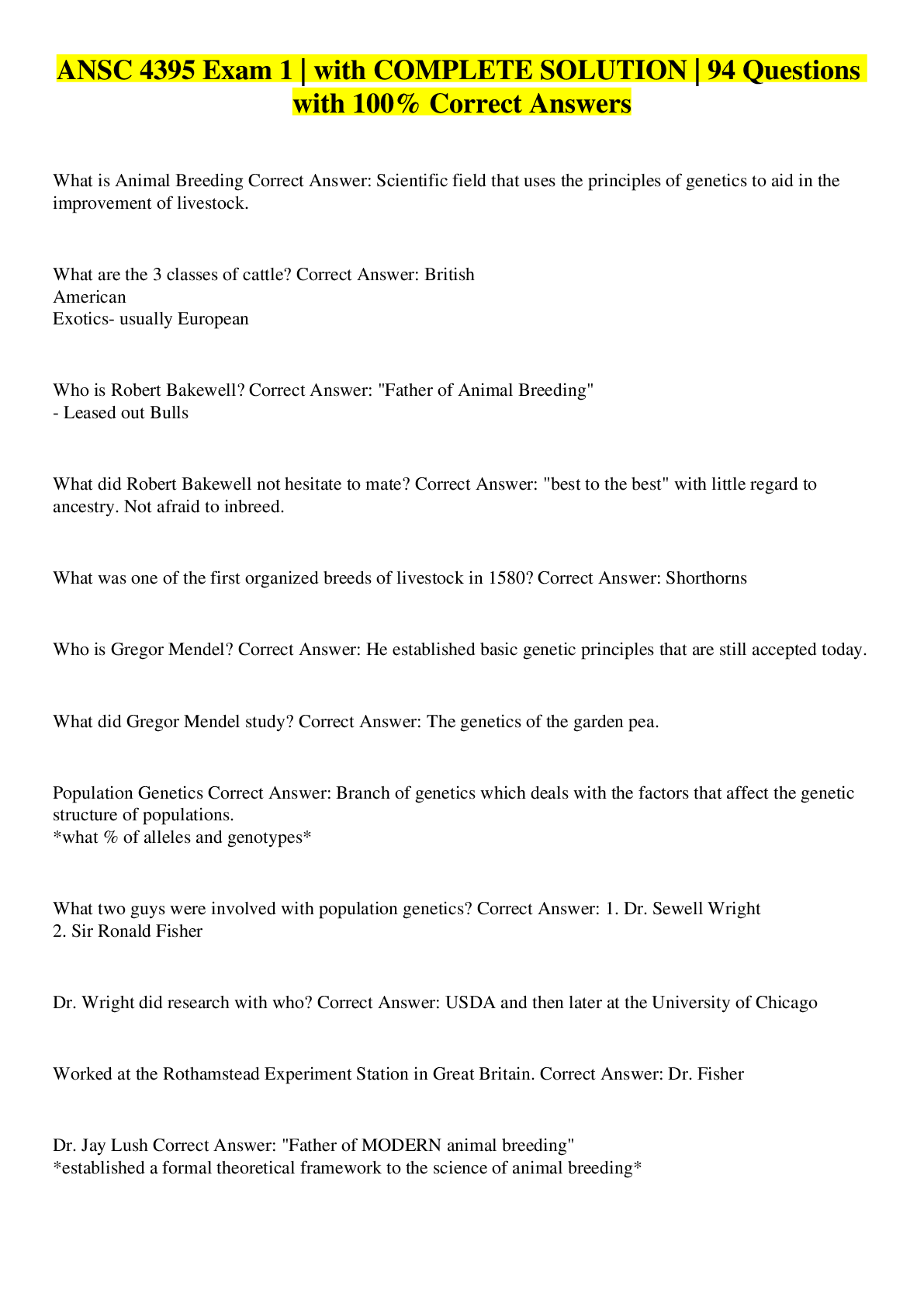

.png)







